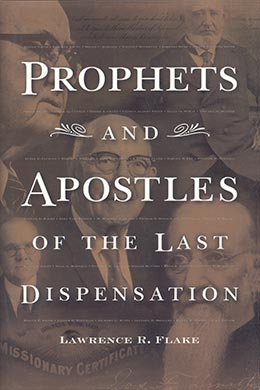Thomas Baldwin Marsh
Lawrence R. Flake, Prophets and Apostles of the Last Dispensation (Provo, UT: Religious Studies Center, Brigham Young University, 2001), 325–27.
No known photograph in existence
Born: 1 November 1799, Acton, Massachusetts
Quorum of the Twelve Apostles: 26 April 1835 (age 35)
President of the Quorum of the Twelve: 2 May 1835
Excommunicated: 17 March 1839
Rebaptized: 16 July 1857
Died: January 1866 (age 66), Ogden, Utah
Although not yet sixty years of age, Thomas B. Marsh looked very old and feeble when he came to Utah in 1857. He was broken in body, mind, and spirit—a condition he attributed to his apostasy from the Church in Missouri nineteen years before. “If any of you want to see the effects of apostasy,” he said, “look upon me.” [1] His wife, Elizabeth Godkin, was dead; his friends and family had deserted him; his health and wealth were gone; and he agonized over the knowledge that he had rejected and had sought to destroy the true Church of Jesus Christ.
In a letter to President Young, he appealed for readmission to the Church. Brigham Young, who had served as an apostle under Brother Marsh, the first president of the Quorum of the Twelve, replied, “Let him be baptized and confirmed and then come to the Valleys.” [2] Two days after Thomas’s arrival in Salt Lake City, President Young invited him to address the Sunday morning gathering of the Saints. Freely confessing the error of his actions, he explained, “I was blinded and thought I saw a beam in brother Joseph’s eye, but it was nothing but a mote, and my own eye was filled with the beam.” [3] He warned the Saints against feeling too secure in their positions in the Church and used himself as an example of how fast and far one could fall if he gave way to the spirit of the adversary. After Brother Marsh’s address, President Young called for a vote to receive him into fellowship. The proposal was carried unanimously.
As a young man, Thomas Marsh became discouraged with the churches of the world and almost lost hope of finding the truth. But through the spirit of prophecy he received the assurance that a new church would soon rise, possessing the gospel in its purity. He heard of Joseph Smith’s “golden Bible” while traveling near Palmyra and immediately investigated. At E. B. Grandin’s printing office, Thomas met Martin Harris and obtained a few pages of the Book of Mormon, which he eagerly studied. Baptized a few weeks later, he became a devoted missionary, laboring in Canada and in many of the United States.
After his call to the Quorum of the Twelve in 1835 and during the persecutions and trials of the Church in the fall of 1838, Brother Marsh became agitated over small matters, and bitterness filled his soul to the extent that he joined the opposition in promoting lies and slander against the Saints. The word of one who had been so high in the leadership of the Church was given great credibility and intensified the violence against the Saints.
The last nine years of Thomas Marsh’s life were spent in the Salt Lake Valley, where he was reordained to the office of high priest and was cared for by his fellow Saints. In the Ogden cemetery a small monument bears the words, “Thomas B. Marsh, First President of the Twelve Apostles . . . Erected by his friends.”
Notes
[1] B. H. Roberts, A Comprehensive History of the Church of Jesus Christ of Latter-day Saints (Salt Lake City: Bookcraft, 1968) 1:507. See also Lyndon W. Cook, ‘“I have Sinned Against Heaven, and Am Unworthy of Your Confidence, But I Cannot Live without a Reconciliation’: Thomas B. Marsh Returns to the Church,” BYU Studies 20, no. 4 (summer 1980): 389–400.
[2] Matthias F. Cowley, ed., Wilford Woodruff, Fourth President of the Church of Jesus Christ of Latter-day Saints (Salt Lake City: Bookcraft, 1964), 381.
[3] Journal of Discourses, 5:207.
